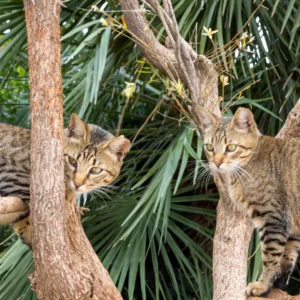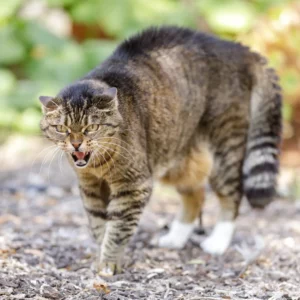Blog
Feral Cat: A Compassionate Guide to Taming
Feral cats, often misunderstood and misjudged, require patience, understanding, and care to transition into a more domesticated lifestyle. Taming a feral cat is not just about domestication but about building trust, ensuring health, and understanding cat behavior. This guide delves into the intricacies of taming, highlighting the importance of health considerations, disease prevention, and behavioral understanding to make this journey as smooth as possible for both you and your new feline friend.
Understanding Feral Cat Behavior
Feral cats exhibit behaviors deeply rooted in their need for survival. Unlike domestic cats, feral cats are more cautious, often hiding or displaying defensive behaviors when approached. Understanding these behaviors is crucial in the process of taming a cat. It requires patience and slow, non-threatening interactions to build trust.
The First Steps in Taming a Feral Cat
Feeding: Begin by offering food at a regular time and place to establish a routine. This not only provides necessary nutrition but also starts to build a bond between you and the cat. It’s crucial to know how much to feed your cat, use our Cat Nutrition Calculators today!
Safe Space: Provide a sheltered area where the cat can feel secure. A sheltered outdoor space or a quiet room in your home can serve as a sanctuary for your feral friend.
Gradual Interaction: Once the cat seems comfortable with your presence during feeding times, introduce gentle speaking and minimal movement to get them used to human interaction.
Health Considerations and Disease Prevention
Vaccinations and Check-ups: Taming a cat involves ensuring their health is not compromised. Schedule a visit to the veterinarian for vaccinations and a general health check-up. This visit can help identify and prevent diseases common among feral cats, such as feline leukemia virus (FeLV) and feline immunodeficiency virus (FIV).
Spaying/Neutering: One of the most responsible steps in taming a feral cat is to have them spayed or neutered. This not only prevents unwanted litters but also reduces roaming and aggressive behaviors.
Parasite Control: Feral cats often have fleas, ticks, and worms. Proper treatment and regular preventive measures are essential to maintain their health and comfort.
Behavioral Adjustments and Socialization
Taming a feral cat requires understanding and modifying their behavior gently. Using toys and treats, you can encourage play and interaction, which are key components of their socialization process. It’s crucial to let the cat set the pace and show you when they’re ready for the next step in their socialization.
Patience is Key: The process of taming can take weeks, months, or even longer. Celebrate small victories, such as the cat coming out of hiding or accepting food from your hand.
Positive Reinforcement: Use treats and gentle praise to reinforce positive interactions. Avoid punishment, as it can erode trust and prolong the taming process.
The Role of Environmental Enrichment
Creating an enriching environment can significantly aid in taming a feral cat. Include climbing structures, scratching posts, and hiding spots to simulate a more natural habitat. This not only makes the cat feel more at ease but also provides necessary outlets for their natural behaviors.
Conclusion: A Journey of Patience and Love
Taming a feral cat is a journey filled with challenges and rewards. It requires a deep understanding of feline behavior, attention to health and disease prevention, and an abundance of patience and compassion. Each step forward in this journey strengthens the bond between you and your feline friend, transforming fear and mistrust into love and companionship.
Remember, taming a feral cat is not about changing their innate nature but about embracing it with care, respect, and understanding. Through patience, health care, and behavioral understanding, you can offer a feral cat a chance at a safer, happier life alongside human companions.



